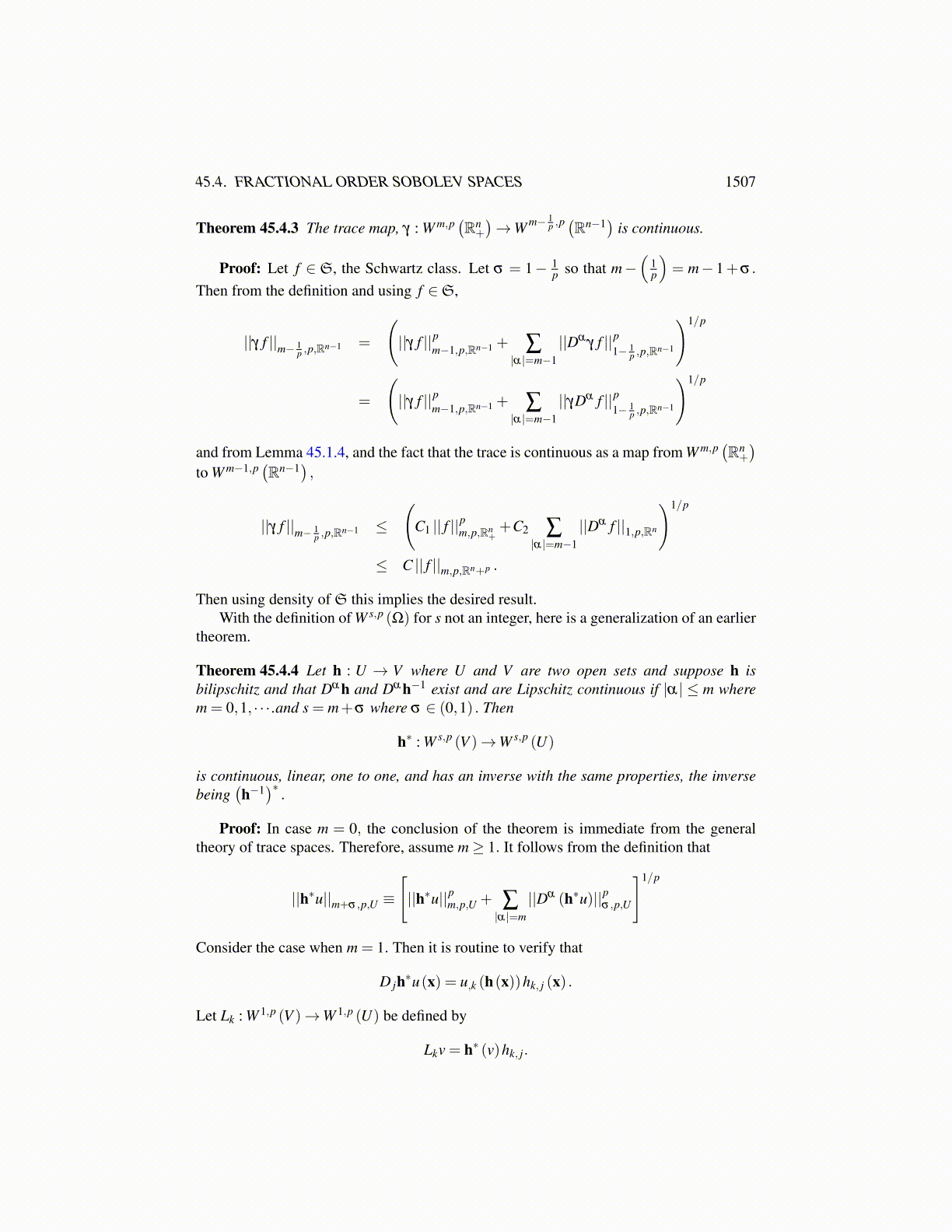
45.3. INTRINSIC NORMS 1507
Now defineEu≡ h∗E ′ (k∗u)
Say xn ≤ g(x̂) . Then (x̂,xn) ∈U and so (h(x̂) ,xn) ∈U ′. Thus
Eu(x̂,xn) ≡ h∗E ′ (k∗u)(x̂,xn)
≡ E ′ (k∗u)(h(x̂) ,xn) (45.3.22)
Now g(x̂)≥ xn and so g′ (h(x̂))≥ xn because
g′ (h(x̂))≡ k∗g(h(x̂)) = g(x̂)
and so 45.3.22 equals= (k∗u)(h(x̂) ,xn) = u(x̂,xn)
Thus E leaves u unchanged at points (x̂,xn) where xn ≤ g(x̂) . Also
||Eu|| ˜W θ ,p(Rn)=∣∣∣∣h∗E ′k∗u∣∣∣∣ ˜W θ ,p(Rn)
≤ ||h∗||∣∣∣∣E ′k∗u∣∣∣∣ ˜W θ ,p(Rn)
≤ ||h∗||∣∣∣∣E ′∣∣∣∣ ||k∗|| ||u|| ˜W θ ,p(U)
=C ||u|| ˜W θ ,p(U)
To complete the proof, cover U with finitely many sets of this sort oriented with respectto one of the coordinate axes as this one was along with an open set whose closure iscontained in U and then use a smooth partition of unity to localize the function to thesituation of the sort just discussed and one whose support is contained in U. Extend thatone to equal zero off its support and treat the others as above. This proves the proposition.
Recall Theorem 37.2.7 which gives an extension operator which maps from the space
W 1,p (U) to W 1,p (Rn) also denoted by E. Now it is not hard to see that ˜W θ ,p (U) =W θ ,p (U) and the two norms are equivalent.
Theorem 45.3.13 Let U be a bounded open set which has Lipschitz boundary and θ ∈(0,1) . Then ˜W θ ,p (U) = W θ ,p (U) and the two norms are equivalent.
Proof: Let u ∈ ˜W θ ,p (U). Letting E be the extension operator of Lemma 45.3.12, thereis a constant C such that
C ||u|| ˜W θ ,p(U)≥ ||Eu|| ˜W θ ,p(Rn)
= ||Eu||W θ ,p(Rn) ≥ ||u||W θ ,p(U) .
Thus if u ∈ ˜W θ ,p (U), then u ∈W θ ,p (U) and the inclusion map is continuous.Next suppose u ∈W θ ,p (U) and let γ f = u for
f ∈W(W 1,p (U) ,Lp (U) , p,1−θ
)≡WU
Then from Theorem 37.2.7 and the definition of the norm in WU
E f ∈W(W 1,p (Rn) ,Lp (Rn) , p,1−θ
)≡W